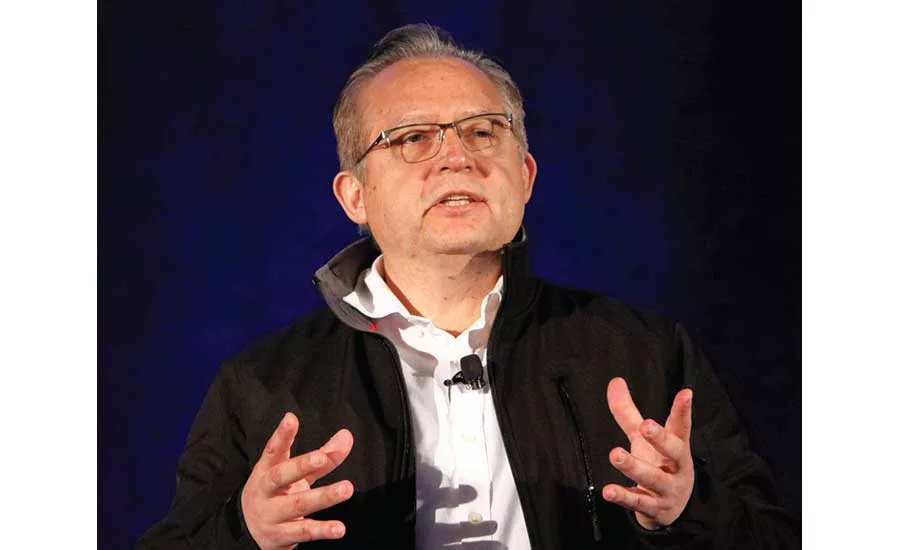Editor's Note
Digitalization doesn’t just mean technological changes
There is a major paradigm shift happening, not just in food and beverage, but in practically every industry.

Vicente Olivo- Espinosa, director of information solutions for Maple Leaf Foods, delivering his Automation Keynote presentation at FA&M 2018.
There is a major paradigm shift happening, not just in food and beverage, but in practically every industry. It is being called the digital transformation, and this magazine has definitely covered the topic many times before, but on the heels of a few conferences I’ve attended recently, including our own Food Automation and Manufacturing Conference in April, it is clear that digital is definitely the topic du jour.
We will be doing our big FA&M Conference issue next month, where we will talk about the key trends and takeaways, so definitely look out for that, but I did want to mention in this note the importance of the digital topic.
I think it might be easy to categorize digital transformation as just investing in new technology. However, let me say this: If there is one thing you need to know now about the digital revolution, it is that it is much more than merely purchasing new equipment, software or services.
Our FA&M automation keynote speaker, Vicente Olivo-Espinosa, director of information solutions for Maple Leaf Foods, said it best in his presentation.
“We understand that when you add digital technology to help people execute their work, there will be a change in the way of working,” he said. “New ways of working will be coming, new ways of running operations and new ways of engaging customers.”
What Olivo-Espinosa essentially was describing, without naming it, is culture. At its core, digital transformation has to do more with the culture of a workplace than its technology. It is about coming up with new ways of doing things.
At the IFS World Conference held in Atlanta last month, Gartner Senior Vice President Daryl C. Plummer gave a great presentation on business and technology trends. He discussed how digitalization is about optimization and transformation. To start the journey, a company must look at its efficiency and then begin innovating.
He talked about the legacy company NCR—one that previous generations in my own family from Ohio had worked for—which was originally called National Cash Register. For the past few decades, it has concentrated on providing point-of-sales equipment for retail stores. However, with the introduction of Amazon’s Go stores, where checkouts don’t exist, and transactions are performed through smartphones and geofencing technology, NCR started to have an uh-oh moment. But instead of putting its head in the sand, the company is now pivoting to a model based on sensors and scanners.
It is times like these when there is a clear choice: You can keep on doing what you’ve been doing and hope for the best, or you can get ahead of the game before the ground falls out from under your feet.
Plummer framed this in terms of different types of disruptions a company can engage in: offensive disruption, where a company creates something new; defensive disruption, where a company creates something to stop another company from disrupting it; and self-disruption, where you look at what you’ve been doing and, even if it is working, try to do it another way.
“Your cultural shift will depend on how well you are able to disrupt yourself,” he says. “When you go into this digital age, go in with your eyes open and see what it can do for you.”
Looking for a reprint of this article?
From high-res PDFs to custom plaques, order your copy today!







